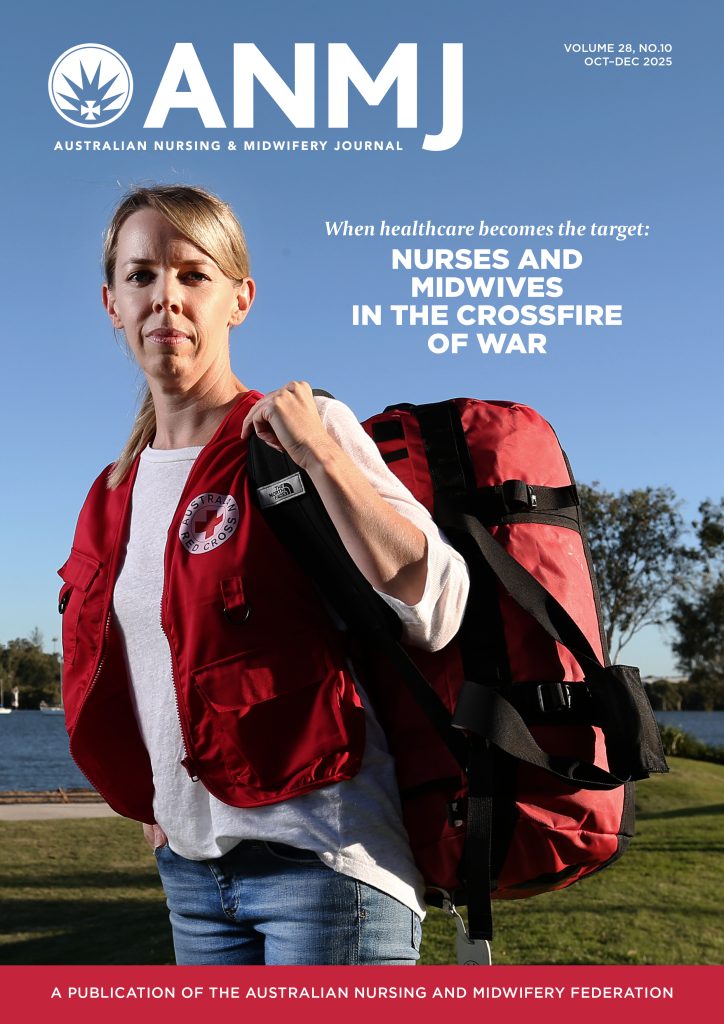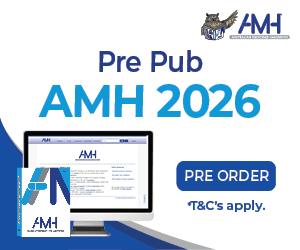Chronic pain in children is a significant yet under recognised global public health problem, with prevalence studies estimating that between 11% and 38% (mean 20.8%) of children live with chronic pain (pain lasting longer than three months).1,2
The prevalence of chronic paediatric pain in Australia mirrors these statistics, with Chronic Pain Australia (CPA) concurring that one in five children experience chronic pain across the nation.3
THE PROBLEM OF PAIN STIGMA
As is the case internationally, the management of chronic pain in children is complex and challenging. Compounding the complexity of accurately assessing and effectively managing chronic paediatric pain is that children and their parents are often not believed when presenting for care and treatment – a problem that has been prevalent for decades.
The negative pain biases of people (healthcare professionals, teachers, and peers among them) can lead to children and their parents being stigmatised (subjected to ‘pain stigma’) and treated in a biased and discriminatory way, leaving them feeling distressed, isolated, abandoned, alone and deeply frustrated and fearful of the future. Children and families from diverse cultural and language backgrounds are especially vulnerable to experiencing pain stigma due to racial and ethnic biases in pain assessment, attribution and care.4,5
Another complicating factor in the effective management of kids in chronic pain is the lack of accessible and affordable paediatric pain services. According to CPA there are only six paediatric pain clinics nationally in Australia, each with a cap on referrals of around 250 per year. This means that children in chronic pain can wait anywhere between one and three years before being seen. As CPA points out, ‘This is a tremendously longtime in a short life, and can span some of a child’s critical development years’.3This delay can be especially problematic when chronic pain causes children to miss school. In Australia, for example, it is estimated that children in chronic pain can miss up to 22% (almost nine weeks) of their schooling days.3
FORMS OF CHRONIC PAEDIATRIC PAIN
Chronic pain in children can manifest in one of two forms chronic primary pain and chronic secondary pain. Chronic primary pain is characterised by ‘significant emotional or functional disability and is diagnosed independently of identified biological or psychological contributors’.1(p1)
The most common paediatric primary chronic pain diagnoses include: chronic headaches, chronic abdominal pain (including chronic pelvic pain), chronic musculoskeletal and/or joint pain, and chronic back pain. Another underappreciated paediatric chronic pain condition is Complex Regional Pain Syndrome (CRPS), a rare and debilitating disease for which delayed diagnoses can prolong disability and emotional distress.6
Chronic secondary pain, in contrast, is pain that has ‘a clear underlying etiology such as a disease, injury or lesion, or their treatment’ (eg. surgery, chemotherapy, radiotherapy)’.1(p1)In either case, whether primary or secondary in nature, chronic pain can be extremely traumatising for a child, the consequences of which can have a major impact on their lives and development.
NEGATIVE IMPACT ON DEVELOPMENTAL MILESTONES
A unique feature of paediatric chronic pain is its negative impact on a child’s ability to achieve important developmental milestones as they grow from childhood to adulthood. As noted by WHO,1chronic pain can significantly affect the emotional, psychological, physical and social development and functioning of children and adolescents in adverse ways. Specific developmental domains which can be severely disrupted by chronic pain include physical functioning (eg. engaging in sport, play, and other recreational activities), mood, interpersonal relationships (eg. making and sustaining friends), social interactions, schooling and educational attainment, and sleep – all of which are critical to the development of a child’s self-esteem, personal identity, health-related quality of life, and overall emotional adjustment and regulation.7
The consequences of developmental milestones being disrupted in childhood are not restricted to childhood, however. Research suggests that the consequences of such disruption can also have a negative impact on the achievement of important life goals in adulthood such as completing an education, finding employment, establishing and maintaining meaningful social relationships and associated with all these things, a reduction in quality of life and health outcomes – mental and physical.1
CONCLUSION
Chronic paediatric pain has been known about for decades with some of the earliest contemporary works on the subject dating back to 1938 and subsequent foundational works published in the aftermath of the second world war.8Despite the publication of these and later works, development of the field of paediatric chronic pain management has been frustratingly slow and irregular, with advances in science not always being applied in practice to inform better care.
Over the past 15 years the domain of chronic paediatric pain management has started to shift significantly. This shift can be traced back to new understandings about pain experiences in children and how chronic pain management can be improved through achieving neuroplastic changes in the nervous system via evidence-based pain management using a multidisciplinary team approach involving pain specialists, physiotherapists, psychologists, and dieticians.9Also driving this shift is robust advocacy by pain researchers for a public health approach to educating the whole community about the science of chronic pain and its effective management.10
Nurses whose work brings them into direct contact with children and their parents have a responsibility to be well informed about pain science. This includes being knowledgeable about the complexity of chronic paediatric pain including its different manifestations, assessment, attribution and management, gaps in care, and how best to support children and parents grappling with pain stigma and system blocks to their accessing affordable paediatric chronic pain services.
Kids with chronic pain need to be believed and their parents supported in getting the help they need to enable their children to live a life that is not defined by their untreated pain. Affordable, high quality and accessible paediatric pain management is a fundamental human right and it is incumbent on the nursing profession to do what it can to promote and protect this right.
References
- World Health Organization. Guidelines on the management of chronic pain in children. World Health Organization, Geneva; 2020
- Chambers CT, Dol J, Tutelman PR, Langley CL, Parker JA, Cormier BT, et al. The prevalence of chronic pain in children and adolescents: a systematic review update and meta-analysis. Pain. 2024 Oct 1;165(10):2215-34
- Chronic Pain Australia (CPA), Morningside, Qld. 1 in 5 Children living with chronic pain [Internet]; 2024 [cited 8 Nov 2024]. Available from: chronicpainaustralia. org.au/news/1-in-5-children-living-with-chronic-pain-launch-of-kids-in-pain-week-to-raise-awareness-of-lack-in-treatment-and-support-for-kids/
- Haas SM, Mullin GJ, Williams A, Reynolds A, Tuerxuntuoheti A, Reyes PG, et al. Racial bias in pediatric pain perception. J Pain. 2024 Sep 1;25(9):104583
- Morales ME, Yong RJ. Racial and ethnic disparities in the treatment of chronic pain. Pain Med. 2021 Jan 1;22(1):75-90
- Limerick G, Christo DK, Tram J, Moheimani R, Manor J, Chakravarthy K, et al. Complex regional pain syndrome: Evidence-based advances in concepts and treatments. Curr Pain and Headache Rep. 2023 Sep;27(9):269-98
- Rosenbloom BN, Rabbitts JA, Palermo TM. A developmental perspective on the impact of chronic pain in late adolescence and early adulthood: implications for assessment and intervention. Pain. 2017 Sep 1;158(9):1629-32
- Unruh AM, McGrath PJ. History of pain in children In: McGrath PJ, Stevens BJ, Walker SM, Zempsky WT, editors. Oxford textbook of paediatric pain [Internet]. Online edition Oxford University Press, USA; 2013. Available from: doi.org/10.1093/ med/9780199642656.003.0001
- Cohen SP, Vase L, Hooten WM. Chronic pain: an update on burden, best practices, and new advances. Lancet. 2021 May 29;397(10289):2082- 97
- Ryan CG, Karran EL, Wallwork SB, Pate JW, O’Keeffe M, Fullen BM, et al. We Are All in This Together—Whole of Community Pain Science Education Campaigns to Promote Better Management of Persistent Pain. J Pain. 2023 Oct 31
Author
Dr Megan-Jane Johnstone AO, PhD, BA, RN is Adjunct Professor, School of Nursing and Midwifery, La Trobe University, Melbourne, and the author of Bioethics: a nursing perspective.








